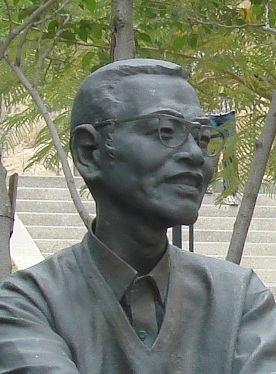Chen's Theorem on:
[Wikipedia]
[Google]
[Amazon]
 In
In
Almost twin primes and Chen's theorem
* {{MathWorld , urlname = ChensTheorem , title = Chen's Theorem Theorems in analytic number theory Theorems about prime numbers Chinese mathematical discoveries
number theory
Number theory (or arithmetic or higher arithmetic in older usage) is a branch of pure mathematics devoted primarily to the study of the integers and arithmetic function, integer-valued functions. German mathematician Carl Friedrich Gauss (1777â ...
, Chen's theorem states that every sufficiently large even
Even may refer to:
General
* Even (given name), a Norwegian male personal name
* Even (surname)
* Even (people), an ethnic group from Siberia and Russian Far East
** Even language, a language spoken by the Evens
* Odd and Even, a solitaire game w ...
number can be written as the sum of either two primes
A prime number (or a prime) is a natural number greater than 1 that is not a product of two smaller natural numbers. A natural number greater than 1 that is not prime is called a composite number. For example, 5 is prime because the only ways ...
, or a prime and a semiprime
In mathematics, a semiprime is a natural number that is the product of exactly two prime numbers. The two primes in the product may equal each other, so the semiprimes include the squares of prime numbers.
Because there are infinitely many prime nu ...
(the product of two primes).
History
Thetheorem
In mathematics, a theorem is a statement that has been proved, or can be proved. The ''proof'' of a theorem is a logical argument that uses the inference rules of a deductive system to establish that the theorem is a logical consequence of th ...
was first stated by Chinese
Chinese can refer to:
* Something related to China
* Chinese people, people of Chinese nationality, citizenship, and/or ethnicity
**''Zhonghua minzu'', the supra-ethnic concept of the Chinese nation
** List of ethnic groups in China, people of ...
mathematician
A mathematician is someone who uses an extensive knowledge of mathematics in their work, typically to solve mathematical problems.
Mathematicians are concerned with numbers, data, quantity, structure, space, models, and change.
History
On ...
Chen Jingrun in 1966, with further details of the proof in 1973. His original proof was much simplified by P. M. Ross in 1975. Chen's theorem is a giant step towards the Goldbach's conjecture, and a remarkable result of the sieve methods.
Chen's theorem represents the strengthening of a previous result due to Alfréd Rényi
Alfréd Rényi (20 March 1921 – 1 February 1970) was a Hungarian mathematician known for his work in probability theory, though he also made contributions in combinatorics, graph theory, and number theory.
Life
Rényi was born in Budapest to ...
, who in 1947 had shown there exists a finite ''K'' such that any even number can be written as the sum of a prime number and the product of at most ''K'' primes.
Variations
Chen's 1973 paper stated two results with nearly identical proofs. His Theorem I, on the Goldbach conjecture, was stated above. His Theorem II is a result on thetwin prime conjecture
A twin prime is a prime number that is either 2 less or 2 more than another prime number—for example, either member of the twin prime pair (41, 43). In other words, a twin prime is a prime that has a prime gap of two. Sometimes the term ''twin pr ...
. It states that if ''h'' is a positive even integer
An integer is the number zero (), a positive natural number (, , , etc.) or a negative integer with a minus sign (−1, −2, −3, etc.). The negative numbers are the additive inverses of the corresponding positive numbers. In the language ...
, there are infinitely many primes ''p'' such that ''p'' + ''h'' is either prime or the product of two primes.
Ying Chun Cai proved the following in 2002:
Tomohiro Yamada claimed a proof of the following explicit version of Chen's theorem in 2015:
Matteo Bordignon implies there are gaps in Yamada's proof, which Bordignon overcomes in his PhD. thesis.
References
Citations
Books
* Chapter 10. *External links
* Jean-Claude EvardAlmost twin primes and Chen's theorem
* {{MathWorld , urlname = ChensTheorem , title = Chen's Theorem Theorems in analytic number theory Theorems about prime numbers Chinese mathematical discoveries